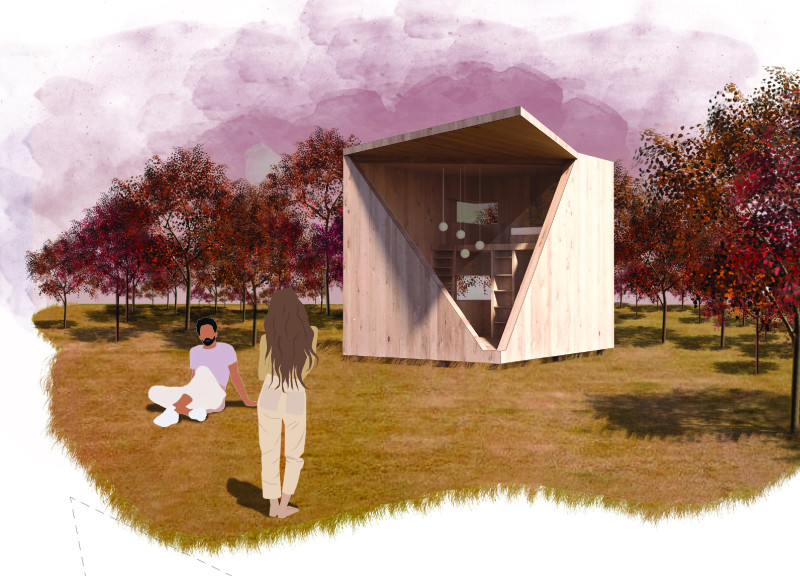5 key facts about this project
The project showcases a thoughtful approach to sustainable design, embedded in an urban environment that balances ecological care with social value. The focus is on a low-cost prism structure that efficiently serves its function while aiming to reduce environmental impact. The overall concept blends economic factors, ecological responsibility, and social engagement, creating a coherent response to modern architectural needs.
Sustainable Design Concept
The design begins with a basic rectangular prism, modified to enhance the use of solar energy and the collection of rainwater. Lowering one vertex creates a sloped surface that maximizes sunlight exposure and facilitates water harvesting. This clever solution enhances both the building’s functionality and its appearance, allowing for seasonal adjustments in light and climate management.
Ventilation Strategy
The project emphasizes an effective ventilation strategy that promotes natural airflow. Openings are thoughtfully placed at various heights, enabling cross ventilation throughout the interior. This design choice improves indoor air quality and comfort while reducing the need for mechanical cooling. The approach aligns with sustainable design principles by fostering a healthier living environment.
Material Selection
Materials have been chosen with care, ensuring both performance and environmental responsibility. The use of aluminium roofing sheets, cross laminated timber, and rigid thermal insulation are notable choices that reflect a focus on durability and energy efficiency. The Exterior Insulation Finish System contributes to the building's overall energy conservation, while microcement flooring, reinforced concrete, and extruded polystyrene foam enhance thermal performance and longevity.
Design Outcomes
The careful selection of design elements leads to a building that meets practical needs while engaging with its environment. The result is a structure that blends well with its surroundings and speaks to its purpose. The mobile eave serves as an effective shading system and protection against rain, adapting to varying weather conditions and enriching the user experience through its responsiveness.



















































